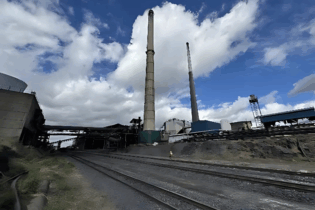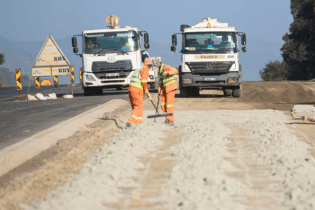A governement department is building an R8 billion “green” head office in a Pretoria suburb in spite of government-owned buildings standing empty in the inner city.
Construction on the building for the Department of Environmental Affairs (DEA) started last month when Minister Edna Molewa turned the first sod in Arcadia. Taxpayers will pay for the environmentally friendly building over the next 27 years. The department’s current annual budget is R4.5bn. The DEA is spending the money although its core function does not include constructing government property. The deal is noted in the annual budget, but the full cost is not mentioned. Instead, costs of R489 million over three years are noted. A 25-year agreement is mentioned but the “significant contingent fiscal obligations” are listed as “0”. “The contract is estimated at R8bn over 25 years. The contract will run for a period of 25 years [excluding construction period of two years],” department spokesman Albi Modise told The Star. “The winning contractor gets a unitary payment of R95.5m a year for 25 years and the government capital contribution of R366m paid in monthly instalments during the construction period.” Maintenance and furniture are included. The department declined to explain how the R8bn total was calculated, saying “this cannot be explained in a one-line answer”. The contract is for “design, construction, operation, maintenance and financing”, and it is not clear how much each of these costs. The R95.5m a year for the contractor payment could subsidise 13 000 solar geysers for households at the levels which the Department of Energy subsidises through Eskom. The Public Works Department, which runs the government’s accommodation, plans to spend just R162m – a fraction of the cost of the new green building – on developing five national government precincts over seven years. The new building means Environmental Affairs will move away from the Pretoria CBD despite the government owning empty buildings in both Pretoria and Joburg. The list of inner-city vacant properties in Joburg includes at least 368 government properties. The problem of abandoned buildings in the Tshwane metro is so great that in June it issued a by-law enabling it to fine the owners. In 1997 and 2001 the cabinet told government departments to remain in inner cities. “Requests for relocation will therefore not be entertained,” said the cabinet in March 2001. The “green” department expects to move into its new offices in June 2014.The project started in 2006, and the next year the government bought the vacant site for R23.6m.
The deal was signed on June 26 this year with the Imvelo Concessions Company, whose directors were appointed only a month earlier. The department said the delay was because the contractor changed its name; however, The Star could not find a business registered under the original name. Modise said Imvelo was a consortium set up by Tiso Group, Old Mutual, Keren Kula, Wiphold and Aveng/ Grinaker LTA. Imvelo referred requests for comment to the department. The department listed the bids as: Imvelo Consortium at R95.5m a year; Stefanutti Stocks, R104.7m; and Imvelo Group 5, R91.5m. Modise said the Imvelos were not related. Imvelo Group 5 is not registered as a business. The National Treasury has confirmed granting the legally required approvals for the project since 2006. Regulations state that the Treasury must be satisfied the deal is value for money and affordable. The Star asked how the department could afford an R8bn building and how such spending was justified. “The money is available in the department’s budget,” said Modise. “This is a special green building that performs to green specification, a unique project, a first of its kind, with no precedent in government. “It is a project that promotes sustainable development in the construction sector, for the protection of the environment and to the benefit of future generations. “The costs might look quite high for now; however, if you start to calculate savings in water and electricity bills over a number of years and the environmental benefits as well, the investment and savings over time are worth every cent government is spending today.” “The building will not consume more than 115kw/m2/ annum (10 percent of which is from a renewable source). “It will also consume 30 percent less water compared to similar conventional accommodation.” louise.flanagan@inl.co.za The Star







